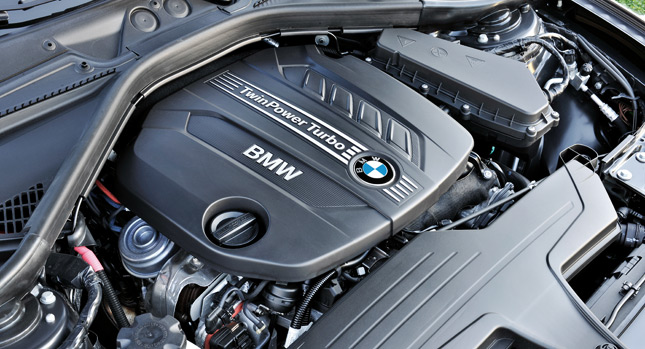In 2007, BMW introduced the Efficient Dynamics strategy to its new vehicles, which encompasses fuel efficient petrol and diesel engines, highly efficient transmissions, “intelligent” management of ancillary systems and advanced aerodynamics.
Despite investing heavily on hybrid and EV technology, as is evident with the ActiveHybrid models and the new “i” sub-brand, BMW also believes that the internal combustion engine has potential for improvement and will continue to power the bulk of its existing and future models.
To that end, it is introducing a new lineup of TwinPower turbocharged engines in both gasoline and diesel forms, starting with the 1.5-liter three-cylinder units.
The new engine family can be mounted longitudinally or transversely and features an aluminum block, double Vanos infinitely variable camshaft control, Valvetronic variable valve timing, direct injection (common rail on the diesels) and depending on the model, one, two or three turbochargers.
The design principles are basically common for all of BMW’s in-line units, with optimized cylinder modules, each featuring a displacement of 500 cc each.
Thus, the three-cylinder has a 1.5-liter capacity, the four-cylinder is a 2.0-liter and the six-cylinder is 3.0-liters. Moreover, the power developed in each cylinder is between 30 and 55 kW (40-74 HP) and torque from 60 to 80 Nm (44-59 lb-ft) for the petrol engines and 20-45 kW (27-60 HP) and 75-110 Nm (55-81 lb-ft) for the diesel units.
Engines of the same fuel type share 60 percent of their parts, whereas petrol and diesel engines have a 40 percent parts commonality.
The first member of TwinPower family is the 1.5-liter three-cylinder unit. According to the figures provided, the petrol versions will deliver between 120 and 222 HP and 180-240 Nm (133-177 lb-ft) of peak torque, while the diesels will be rated between 80HP and 180 HP and 225-330 Nm (165-243 lb-ft) of torque.
BMW claims that the 1.5-liter TwinPower Turbo engines are extremely fuel efficient and provide high low-end torque and rapid response. It adds that the “half of a six-cylinder” unit is free of first-and second-order inertial forces while roll torque, much smaller than the six-cylinder, is eliminated by the use of balancer shaft.
According to the carmaker, the addition of a torsional vibration damper results in a “remarkably smoothly-running engine”, while it also points out that it will sound good.
“Because the frequency of the sound of a three-cylinder engine increases 50 percent faster than that of a four-cylinder, the engine is perceived as being extremely vivacious and sporty,” said BMW in a statement.
The new 1.5-liter turbocharged engine is expected to power the next-generation of the Mini family that’s due in 2014, and the BMW i8 hybrid supercar, the next 1-Series and possibly at some point, the 3-Series as well.
By Andrew Tsaousis
PHOTO GALLERY






